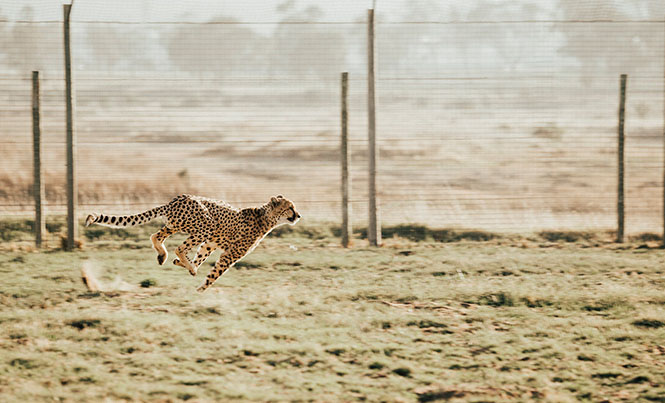
Among the top 20 fastest birds, you will find Anna´s hummingbird which reaches 98 km/h (61 mph) in flight! Another way to measure speed is body lengths per second and this little bird at only about 10 cm (4 in) long can move 276 body lengths per second, which is the highest known length-specific velocity attained by any vertebrate. Then we have the ostrich, which does not fly but can reach peaks of 97 km/h (60 mph) running, making this bird the tallest bird and the fastest animal on two legs.
We have this idea that reptiles are slow but there is a large lizard called the bearded dragon found in Australia, measuring about 60 cm long, that can reach up to 40 km/h (25 mph). The biggest and most hydrodynamic of all turtles, the leatherback, can swim as fast as 35 km/h (22 mph).
Among fish, the black marlin seem to be the fastest animal in the ocean reaching speeds of 129 km/h (80 mph), followed by another billfish, the sailfish, which reaches speeds of 109 km/h (68 mph). In third place in the ocean, the Mako shark can reach a burst speed of 74 km/h (46 mph).
Onto mammals: the Mexican bat is the fastest mammal reaching 160 km/h (99 mph) in flight. And the very famous cheetah can reach up to 121 km/h (75 mph). But the most impressive fact about the cheetah – as there are faster animals – is that it can accelerate from 0 to 97 km/h (60 mph) in three seconds!
But hang on there because even if all these speeds are amazing, if we look at body length per second, the fastest organism on Earth (relative to body length) is the South Californian mite with a speed of 322 body lengths per second! Whether in kms or body lengths, what would be interesting to know next, is why do each of these speedy animals need to move so fast?